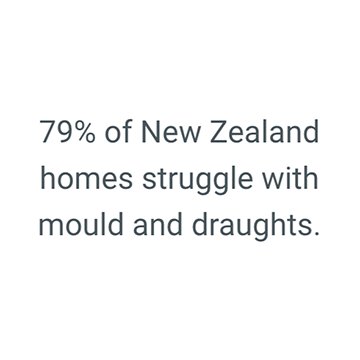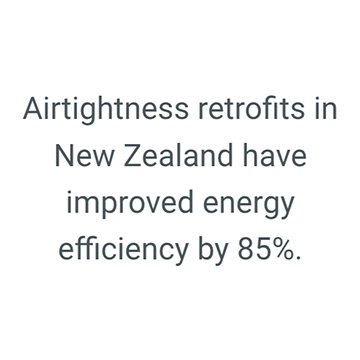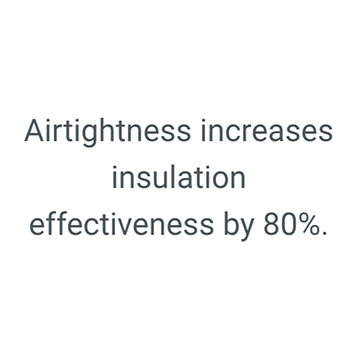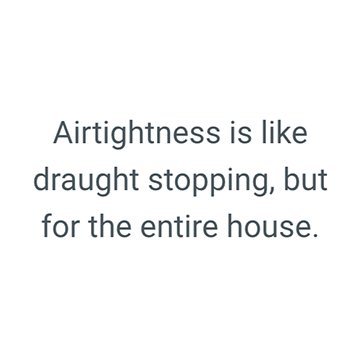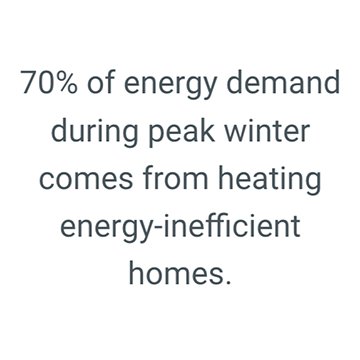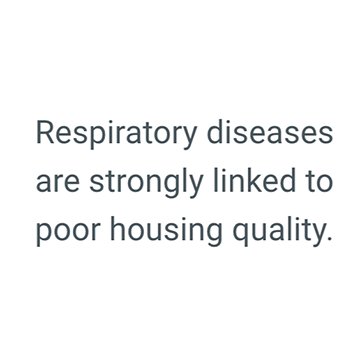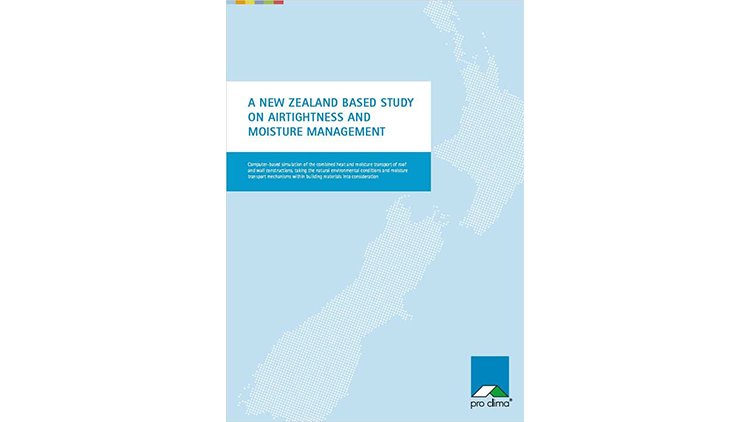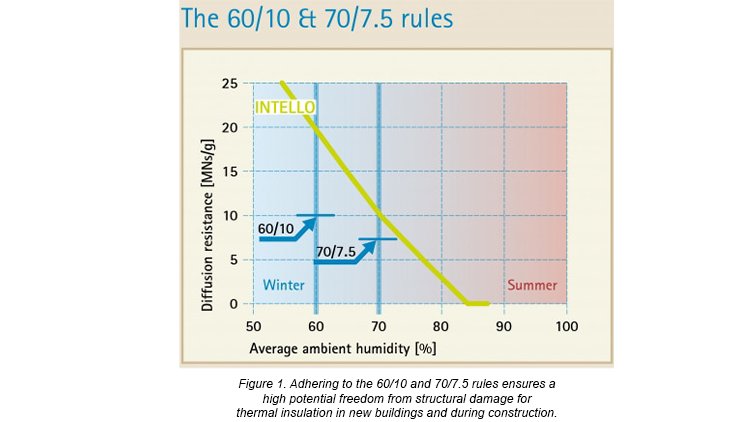Airtightness

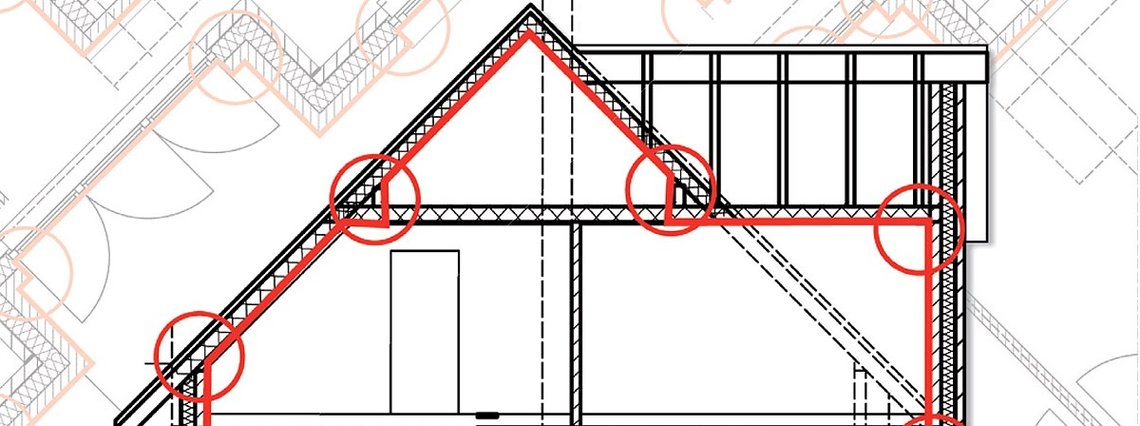
Airtightness

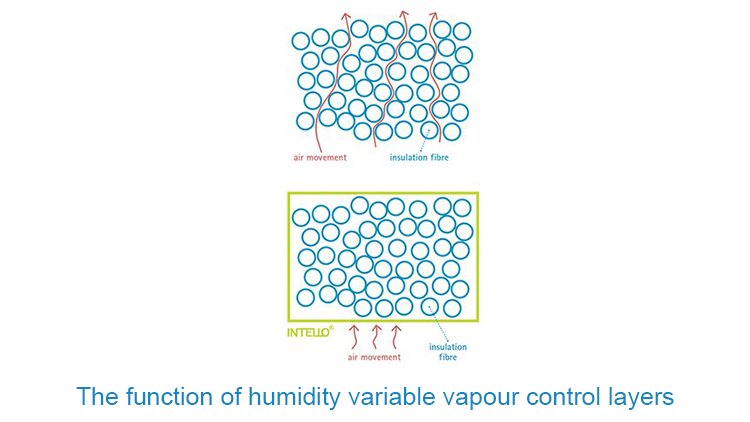
What is Airtightness?
Airtightness refers to how well a building should be sealed from the inside and outside to prevent unwanted air from entering or escaping through cracks, gaps, or openings in the building envelope.
An airtight building is designed and constructed to minimise the uncontrolled movement of air through the walls, roof, floor, and joinery. Airtightness can be measured, providing an indication of the quality and likely future performance of the building.
Fresh Air and Airtightness
Fresh air must always be supplied inside a healthy building, and stale air should be extracted. This is independent of airtightness and can be achieved with either openable windows or, ideally, a mechanical ventilation system. Having air ‘leaking’ through cracks and permeable surfaces does not supply adequate or healthy air to the building.
“Build tight. Ventilate right!”
Small Gap, Big Problems!
How to Build a Better Tomorrow
To celebrate 20 years of INTELLO® and to raise awareness about healthier indoor environments, we've created a short documentary series highlighting key aspects of building quality homes for people. The series is comparing early 1900s villas with modern builds, exploring why many new homes still face issues with moisture, cold, and long-term structural problems.
Learn why airtightness matters and uncover the reasons behind cold, damp, mouldy, and deteriorating buildings in Aotearoa.
Our homes should be energy efficient, durable, and provide comfort and good health, yet many in New Zealand are still cold, damp, mouldy and prone to long-term structural deterioration due to high levels of moisture trapped in wall and roof cavities.
These videos highlight why airtightness is essential for better home performance.
Jon Davies, Technical and Education Manager of Pro Clima NZ.
Small gap, big problems
Join us as we explore Airtightness — a concept often misunderstood in New Zealand. You may be surprised by what we uncover.
Airtightness Part 1
Why do early 1900s Villas remain the gold standard? Haven't we learned anything in the past 120 years?
Airtightness Part 2
Why are our new buildings still cold, damp, and short-lived?


Moisture and Airtightness
Airtight does not mean vapour tight. Modern airtight construction prevents free air movement while still allowing the flow of moisture as vapour. When designed and constructed well, the interior and the structure of an airtight building will stay dry.
Why is Airtightness Important?
Uncontrolled airflow through the building structure drastically reduces the efficiency of the insulation and will ultimately compromise the integrity of that insulation if moisture builds up within the wall cavity. Long-term insulation effectiveness is dependent on the quality of the airtight envelope that protects the structure of your building. Airtightness helps maintain a more stable indoor temperature, saving energy costs on your heating. Airtight building insulation ensures that energy is kept within your building rather than being wasted by escaping into the atmosphere.
Why is an Intelligent Airtightness System Necessary in New Zealand?
A temperate maritime climate influences New Zealand. Although there aren’t the same seasonal extremes of temperatures as in some countries, most parts of the country have damp and/or humid conditions throughout the year.


Water vapour (humidity) moves through building structures in the following ways:
-
Air movement (convection).
-
Diffusion through materials.

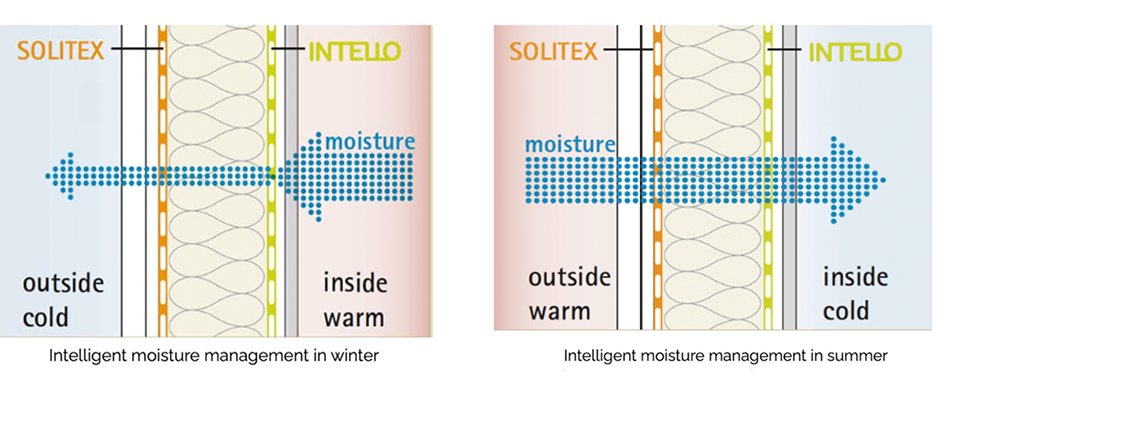
Therefore, it is important to:
-
Control air movement through the building envelope.
-
Protect structures from internally driven moisture.
-
Allow structural drying on the inside.
Benefits of Airtightness
Airtightness is the essential element to ensure perfect thermal insulation, resulting in warmer, drier, healthier buildings all year round.
Moisture is controlled in summer and winter, achieving energy efficiency and durability for maximum protection from your investment.

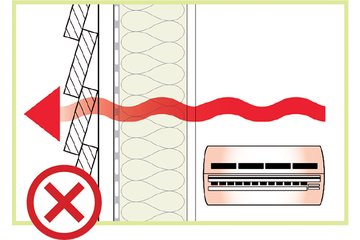
Energy Efficiency
-
Reduced air infiltration saves energy, and therefore, fewer heating/cooling appliances are needed.
-
Keeps your home warm in winter and cool in summer.
-
The solution to reduce New Zealand’s overall energy dependence through greater energy efficiency.

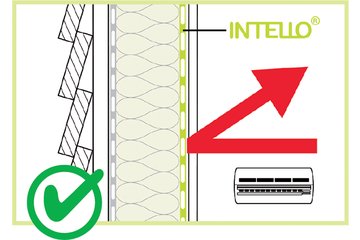
Freedom from structural damage
-
Prevents moisture buildup during construction.
-
High drying capacity through the intelligent INTELLO® membrane.
-
Installation verification is possible with a Blower Door test.

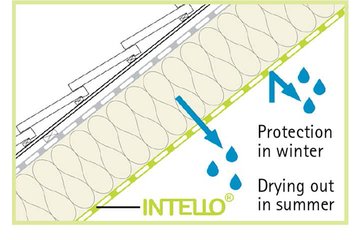
Healthy Indoor Air
-
Eliminates contamination of the indoor air.
-
It prevents mould and mildew from internally driven moisture from being in the construction.
-
Enables controlled ventilation.
Airtightness for Health
An airtight building is easy to keep warm and dry. When a building leaks air through infiltration, air carries heat and moisture with it, making it very hard to maintain healthy indoor conditions. In addition, moist air leaking through the walls, roofs and floors promotes the growth of mould.



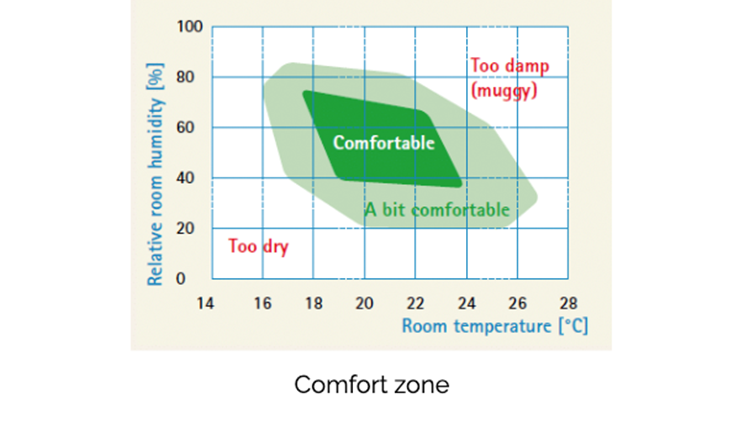
Airtightness for Comfort
Draughts are uncomfortable.
So is being too cold, or too hot.
An airtight building envelope eliminates unwanted draughts and provides much better control of internal temperature, making year-round comfort much easier to achieve.

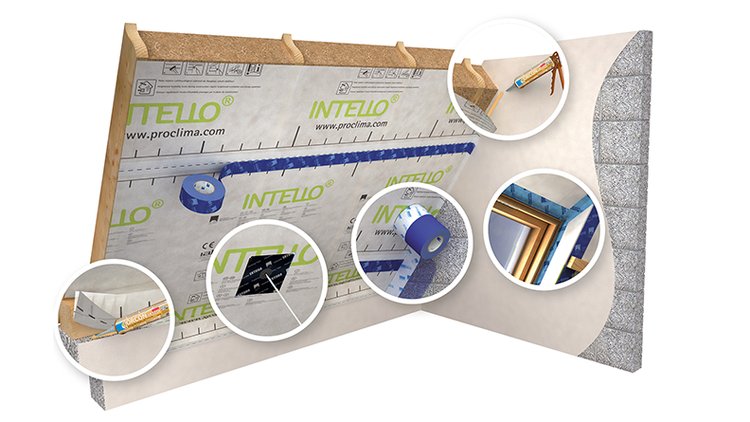
Airtightness for Durability
Dampness increases the rate of decay of all common building materials.
Dry walls, roofs and floors are resilient and durable.
pro clima’s airtightness systems help prevent moisture from entering the structure of the building from the inside while facilitating the drying potential of the building elements, thus making building elements durable for the long term.

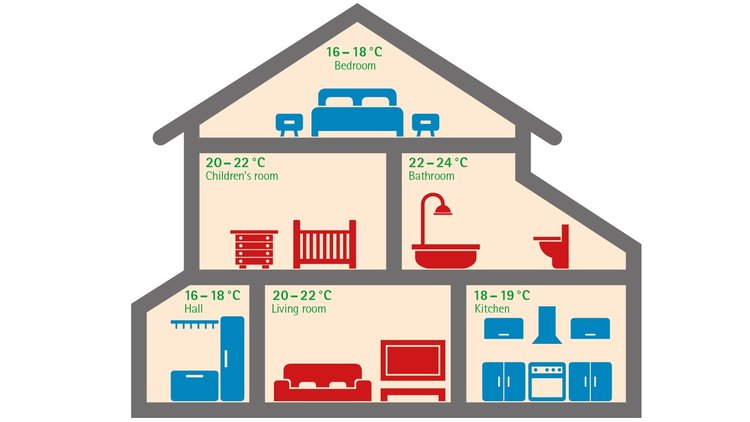
Airtightness for Energy Efficiency
Airtightness is the best way to ensure the optimum energy efficiency of your building.
Insulation works by trapping air. When building insulation is protected on both sides by intelligent air barrier membranes, air movement is stopped, and the insulation can do its job correctly.


Build Airtight
Airtightness testing of buildings is commonplace around the world, for very good reasons, and is becoming more of a requirement in New Zealand.
Whether you do it for health, comfort, energy efficiency or durability, airtightness improves performance.
By designing and constructing your building envelope to be airtight, you’re future-proofing it in the best possible way.
pro clima’s airtightness systems are designed to provide the best conditions for a healthy interior environment.
Airtightness in Buildings - Blower Door Testing
Blower Door Testing: Verifying Airtight Layer Quality
A Blower Door test is a diagnostic procedure used to measure the airtightness of a building's envelope. By mounting a powerful fan in an exterior door frame, technicians create a pressure difference between the inside and outside of the building. This process allows them to quantify the amount of air leakage, revealing hidden gaps and cracks where air can escape or infiltrate. This information is crucial for improving energy efficiency, preventing moisture problems like mold, and ensuring occupant comfort by minimizing drafts and maintaining consistent indoor temperatures.
Airtightness and Moisture Management Study
The updated New Zealand pro clima Study on Airtightness & Moisture Management is based on factual evidence and computer simulations of heat and moisture transport in building structures. It addresses prevalent issues in New Zealand construction, aiming to combat dampness and improve indoor air quality.
The pro clima system offers practical, cost-effective solutions for creating healthy, comfortable, and energy-efficient living environments.


Hydrosafe® Value
For winter building site conditions, an appropriate hydrosafe value is important. The hydrosafe value specifies how well sealed a humidity-variable vapour control layer still is at an average humidity of 70%. Average humidity of 70% will be present if there is 90% indoor air humidity and 50% humidity in the space between the rafters/studs. For example, these values could be present while walls are being plastered or screed is being installed.
According to the 70/7.5 rule, a hydrosafe value of MVTR = 7.5 [MNs/g] is sufficient to keep the increased humidity that results from construction work out of the building's structure and insulation layer.
The 60/10 and 70/7.5 rules
INTELLO® has a hydrosafe value of 10 [MNs/g], significantly above the requirement of MVTR = 7.5 [MNs/g]. However, the hydrosafe value should not be over 13 [MNs/g], as otherwise the drying of moisture that has penetrated into a structure in an unforeseen manner can be hindered. This should not be confused with an external building wrap or rigid air barrier that are required to be <7 [MNs/g] ie. more vapour open than the internal vapour control layer in a temperate, cool or cold climate.
pro clima's DB+ is the original humidity-variable vapour control layer. It was developed in the early 1990s and is similar to the natural performance of wood fibre which has a varying restriction to the passage of moisture depending on the humidity surrounding the fibre. The variable performance ensures a high level of moisture protection in buildings both during and after the construction phase. DB+ has been systematically refined to produce INTELLO®.


Every Structure is a System
Here is what you must consider in your design, new build or renovation.

